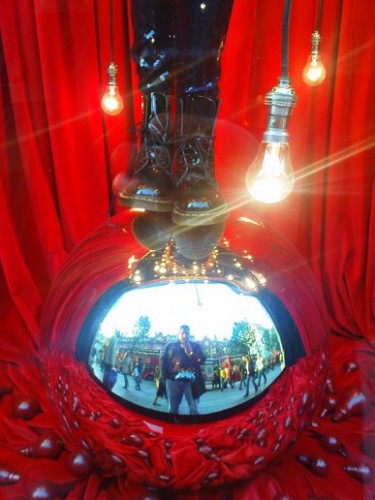“A couple of parting thoughts on the development of new ritual for secular funerals before I switch off the computer for Christmas,” wrote our religious correspondent, Richard Rawlinson some days before the onset of festivities. Yikes, sorry, Richard; we lost that post in the tinsel.
We’re not letting it go, though; your thoughts about ritual are always welcome, and they have not been rendered obsolete by the passage of time. By happy coincidence, Gloria Mundi has a piece on ritual waiting to go out tomorrow. So this’ll work just fine side by side with his.
In a thread on a recent blog, Gloria Mundi has said: ‘I don’t think we’ll get far in the development of new rituals for secular funerals until we stop arguing about belief and concentrate on shape and meaning… Let’s move forwards, shall we?’
I’ve said previously that it’s up to secularists to take up the mantle to create any new ritual, but the future is best formed by looking at the past.
As an exercise aiming to be helpful, I read a funeral mass, deleting the inapplicable (references that require belief) and attempted to adapt a few lines to secular taste. The exercise failed abysmally as most content ended up on the cutting room floor as it’s nearly all God-centred. Shape and meaning were lost due to the need for belief.
I pondered a few other exercises involving looking at political, legal and educational institutions, sports, festivals, and life cycle ceremonies. Much that I like an intuitive quick fix, I concluded this subject requires a more laborious, academic approach, where ritual itself is more thoroughly defined.
Ritual is paradoxical. It’s a social construct yet it defines a portion of reality. It’s intrinsically conventional – repetitive, formal, precise, stylised – yet requires collective imagination.
Too much analysis of a fictional drama pierces the illusion of reality that allows it to take on dangerous matters. The enemy of ritual is the spoilsport who is unwilling to voluntarily suspend belief, incapable of allowing the symbols of a man-made production to take on authentic meaning.
When blatantly designed by masters-of-ceremony and lacking the history and sanctity of traditional religious symbolism, rituals can seem too self-conscious, shallow and abstract to arouse deep emotion and profound conviction.
However, ritual can certainly be either sacred or secular. The key is placing the right symbolic acts within the framework of secular funerals. This might involve formalising the entire framework of the ceremony. The Mass is split into the Introductory Rites (greeting, blessing); Penitential Rite; Liturgy of the Word; Liturgy of the Eucharist (the big one); and the concluding blessing. By sequencing and scripting events, you eliminate potential disruption, unpredictability, confusion and accident.
Nor does sequencing deny individuality. Secular ceremony already alternates between highly specific acts – toasts, salutes, pledges, oaths – with open spaces for improvisation and particularisation – speeches, songs, and so forth.
Some of these structured, predictable – even unchanging – segments provide opportunities for participants to establish their individual emotions, identities, motives and needs. Others allow the ritual masters of ceremony to convey the specific, idiosyncratic messages which are unique to the occasion in hand.
Open sections can be short or protracted, can involve several people or one, can be conventional or new, but must be coordinated to ensure they’re a scene in the same play. If they fail as accurate and authentic metaphors, emotional momentum will flag.
A blessed new year to you all.


